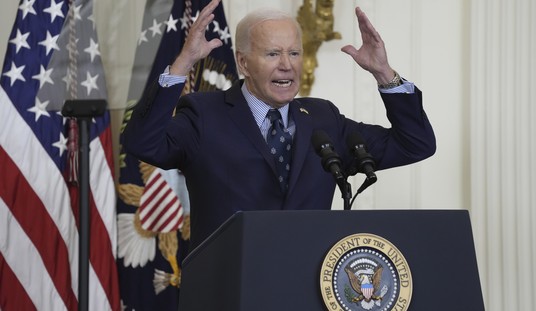If you are inclined to believe Barack Obama's claim that people losing their insurance are giving up skimpy coverage for much better benefits, read the editorial in Monday's Wall Street Journal. Then read it again, and again, and again.
Edie Sunby has a rare form of cancer that is almost always fatal. Yet she is alive, thanks to the efforts of doctors in San Diego, at Stanford University and in Texas. Over the past year, UnitedHealthcare has spent $1.2 million on her medical expenses. But she has just been informed that her insurance is being cancelled.
Worse, in the new California exchange, the only plan that will allow her to continue seeing her San Diego doctors will not pay for the doctors at Stanford or in Texas. There is no reimbursement for out-of-network services.
For Edie Sunby, ObamaCare is a potential death sentence. She is not alone.
Here is my prediction: the kind of coverage Edie Sunby had will never again be seen in the individual market in this country.
You don't need to be an economist to understand why. Think of a game of musical chairs. The health insurers are the chairs. And not a single one of them wants a patient who will spend $1.2 million of their money.
The circumstance under which insurance companies will find it in their self-interest to offer the kind of coverage UnitedHealthcare offered is a market that is free to price risk. Only if people are free to pay actuarially fair premiums can insurers offer the kind of coverage that will pay enormous sums of money to deal with illnesses that have a very low probability of occurring. In a community rated system, plans that are appealing to the sick will attract the sick, who will inevitably be paying premiums that are far below the cost of their care.
Recommended
In the ObamaCare exchanges, health plans are free to select any premium they choose. But they must charge every entrant the same (community rated) premium, regardless of health status and they must accept all comers. Under these conditions, the plans will make a profit on the relatively healthy and incur losses on the relatively sick. Accordingly, they have an incentive to attract the healthy and avoid the sick.
As noted in a previous post, most insurers believe that the young and the healthy tend to buy on price, while older and sicker prospects tend to look more closely at which doctors and hospitals are included in the health plan's network. Accordingly, competitors in the newly created health insurance exchanges are choosing to keep their premiums down by offering very narrow networks. The result is a race to the bottom. The price of a lower premium is less access to care.
After enrollment, these perverse incentives do not go away. The health plans have an incentive to overprovide to the healthy (to keep the ones they have and attract more of them) and underprovide to the sick (to encourage the exodus of the ones they have and discouraged the enrollment of any more of them).
I don't know why this isn't obvious to other health economists. Nothing involved here is more complicated than Economics 101. Here is a very clear presentation.
In competitive markets competition tends to cause the price to change until it equals average cost. Thus, to the extent that price is a measure of the value consumers place on a good or service, the marginal benefit people receive tends to equal the cost of producing that benefit.
The same tendencies exist under managed competition. Because of community rating, premiums are not allowed to adjust to reflect each enrollee's expected health care costs, the way they would in a normal insurance market. As a result, community rating is similar to a price control. At the community rated premium, some enrollees will be overcharged and some will be undercharged. And since price cannot vary to match expected costs, competition will cause costs to change until they tend to equal the premium.
Take those patients who have above-average health care costs and who are therefore "unprofitable." If premiums are free to rise for those people, insurers will compete them up to the level of the cost of their care. But if the premiums are artificially constrained at a lower level, insurers will tend to compete the cost of their care down to the level of the artificial premium. The reverse pressures exist for those people who have below-average health care costs and who are therefore "profitable." If the artificial premiums cannot be competed down to the level of average cost, the tendency will be to compete cost up to the level of the artificial premium.
Bottom line: if you give producers in a market perverse incentives, you will get perverse outcomes.
Unfortunately no one told Edie Sunby about it. Or anyone else, for that matter.

























Join the conversation as a VIP Member